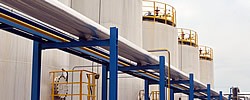Linear alpha olefins are a range of industrially important alpha-olefins, including 1-butene, 1-hexene, 1-octene, 1-decene, 1-dodecene, 1-tetradecene, 1-hexadecene, 1-octadecene and higher blends of C20-C24, C24-C30, and C20-C30 ranges.
Applications
There is a wide range of applications for linear alpha olefins. The lower carbon numbers, 1-butene, 1-hexene and 1-octene are overwhelmingly used as comonomers in production of polyethylene. High Density PolyEthylene (HDPE) and Linear Low Density PolyEthylene (LLDPE) use approximately 2-4% and 8-10% of comonomers, respectively.
Another significant use of C4-C8 linear alpha olefins is for production of linear aldehyde via oxo synthesis (hydroformylation) for later production of short-chain fatty acid, a carboxylic acid, by oxidation of an intermediate aldehyde, or linear alcohols for plasticizer application by hydrogenation of the aldehyde.
The predominant application of 1-decene is in making polyalphaolefin synthetic lubricant basestock (PAO) and to make, in a blend with higher linear alpha olefins, surfactants.
C10-C14 linear alpha olefins are used in making surfactants for aqueous detergent formulations. These carbon numbers may be reacted with benzene to make linear alkyl benzene (LAB), which is further sulfonated to linear alkyl benzene sulfonate (LABS), a popular relatively low cost surfactant for household and industrial detergent applications.
Although some C14 alpha olefin is sold into aqueous detergent applications, C14 has other applications such as being converted into chloroparaffins. A recent application of C14 is as on-land drilling fluid basestock, replacing diesel or kerosene in that application. Although C14 is more expensive than middle distillates, it has a significant advantage environmentally, being much more biodegradable and in handling the material, being much less irritating to skin and less toxic.
C16 - C18 linear olefins find their primary application as the hydrophobes in oil-soluble surfactants and as lubricating fluids themselves. C16 - C18 alpha or internal olefins are used as synthetic drilling fluid base for high value, primarily off-shore synthetic drilling fluids. The preferred materials for the synthetic drilling fluid application are linear internal olefins, which are primarily made by isomerizing linear alpha-olefins to an internal position. The higher internal olefins appear to form a more lubricious layer at the metal surface and are recognized as a better lubricants. Another significant application for C16 - C18 olefins is in paper sizing. Linear alpha olefins are, once again, isomerized into linear internal olefins are then reacted with maleic anhydride to make an alkyl succinic anhydride, a popular paper sizing chemical.
C20 - C30 linear alpha olefins production capacity is only 5-10% of the total production of a linear alpha olefin plant. They are used in a number of reactive and non-reactive applications, including as feedstocks to make heavy linear alkyl benzene (LAB) and low molecular weight polymers which are used to enhance properties of waxes.


